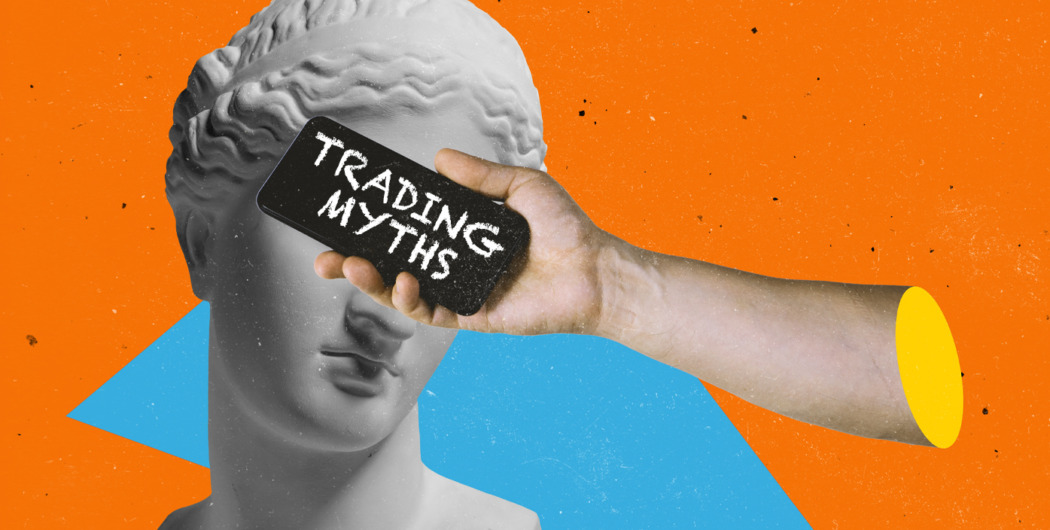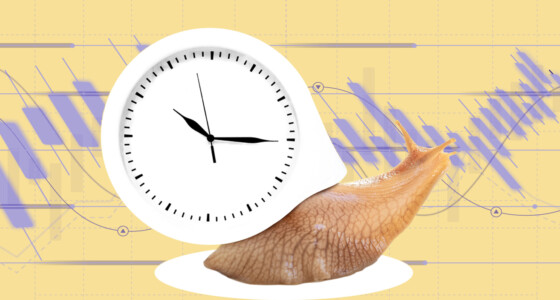

Even in this day and age, there are many myths emanating from the Internet, folk wisdom, and word of mouth. For example, some of the most commonly held myths are:
- Goldfish only have a three-second memory.
- Bulls get angry when they see the color red.
- Humans use only 10% of their brains.
- The Great Wall of China is the only man-made structure visible from space.
None of them are true.
If any of these misconceptions surprised you, wait until you hear these 7 myths about trading.
Myth 1: You just buy low and sell high
Buying low and selling high is the basic strategy every trader starts with. It’s a simple, tried and tested approach, but it’s not everything your trading activity has to come down to. Besides, you can’t apply the buy low/sell high strategy in many market conditions.
To grow trading into something more serious, you need to branch out from the basics. What about buying high and selling higher? You can catch the market when its momentum is in full swing. Or what about the numerous other strategies out there? You can trade based on patterns, breakouts, and reversals, apply oscillators and moving averages, and do a lot more.
Myth 2: Greater leverage = greater returns
One of the more common myths about Forex trading is that leverage is always worth it. Too many resources focus on the good sides of leverage, barely covering the downsides. Many resources ignore that you risk magnifying your losses with borrowed funds.
In truth, the more potentially profitable a position is made, the riskier. Leverage is a double-edged sword that shouldn’t be applied thoughtlessly. You can even lose more than you initially deposited. So, the next time you want to increase your position size through leverage, double-check with your risk management strategy.
Myth 3: You have to trade without emotions
Time and time again, traders have been told to keep their emotions in check. And yes, it is essential—negative repercussions in trading when you let your emotion take over reason. But no one can blame you for being stressed when your positions are performing poorly. Similarly, you can’t help but get excited or frustrated.
Mastering trading psychology simply dictates that you mustn’t let emotions affect your decisions. No one is telling you to fight your human nature and force yourself to feel nothing. It’s normal to feel positive and negative emotions because the trading journey is full of ups and downs!

Myth 4: Stocks are the safest alternative
When times are uncertain, people tend to load up on stocks that are household names. But it’s not always the safest; in some cases, putting your capital primarily in stock is not safe at all. The perceived stability of the stock market is one of the stock trading myths.
The better way to lower market risk is to have diversity. You can go for bonds, real estate, commodities, currencies, and cryptocurrencies, among other assets. The composition of your assets will depend on your goals and risk appetite.
Myth 5: Higher timeframes are easier
Higher timeframes are not easier to trade, just like lower timeframes are not harder. It’s a matter of personal preference. Some will find high timeframes incredibly hard to trade if they don’t have the skillset or the experience for it. Others will find that low timeframes are too detailed and quick to handle.
You don’t have to choose one or the other. Depending on your chosen assets and strategies, you will find yourself trading on different timeframes. Sometimes, you’ll need two charts for one trade. For example, you can scalp on a 15-minute timeframe while also looking at the 1-day chart to track the overall trend.
Myth 6: You should sell when the market’s in trouble
This might be one of the most popular crypto trading myths. When cryptocurrencies were down following the 2018 crash, traders launched a massive sell-off and realized their losses. Fast-forward to 2021-2022, crypto entered a long-term bull-run, with some coins growing by 1,000% and more.
This is a clear example of waiting until the market recovers and recouping your unrealized returns. The same happens in other markets, too. Famously, the stock market tends to recover after each recession.
Myth 7: Screentime will help you become better
Observing the market will not make you a better trader. You wouldn’t expect a football player to improve their skill by looking at the field. What will make you better is practice, preparation, and analysis.
Don’t waste your time increasing your screentime without putting in the action. Have a plan, use multiple charts, apply indicators, open trades based on your trade setup, and monitor them. After closing the position, review your trades and take a note of what worked and what didn’t.
Summary
It’s said that all myths are born from a nugget of truth. Perhaps some of these day trading myths carry a bit of wisdom, but not enough to make them good trading recommendations.
With the rising popularity of trading, there seems to be an overwhelming amount of information. So, take your time to do research and double-check any advice coming your way.









